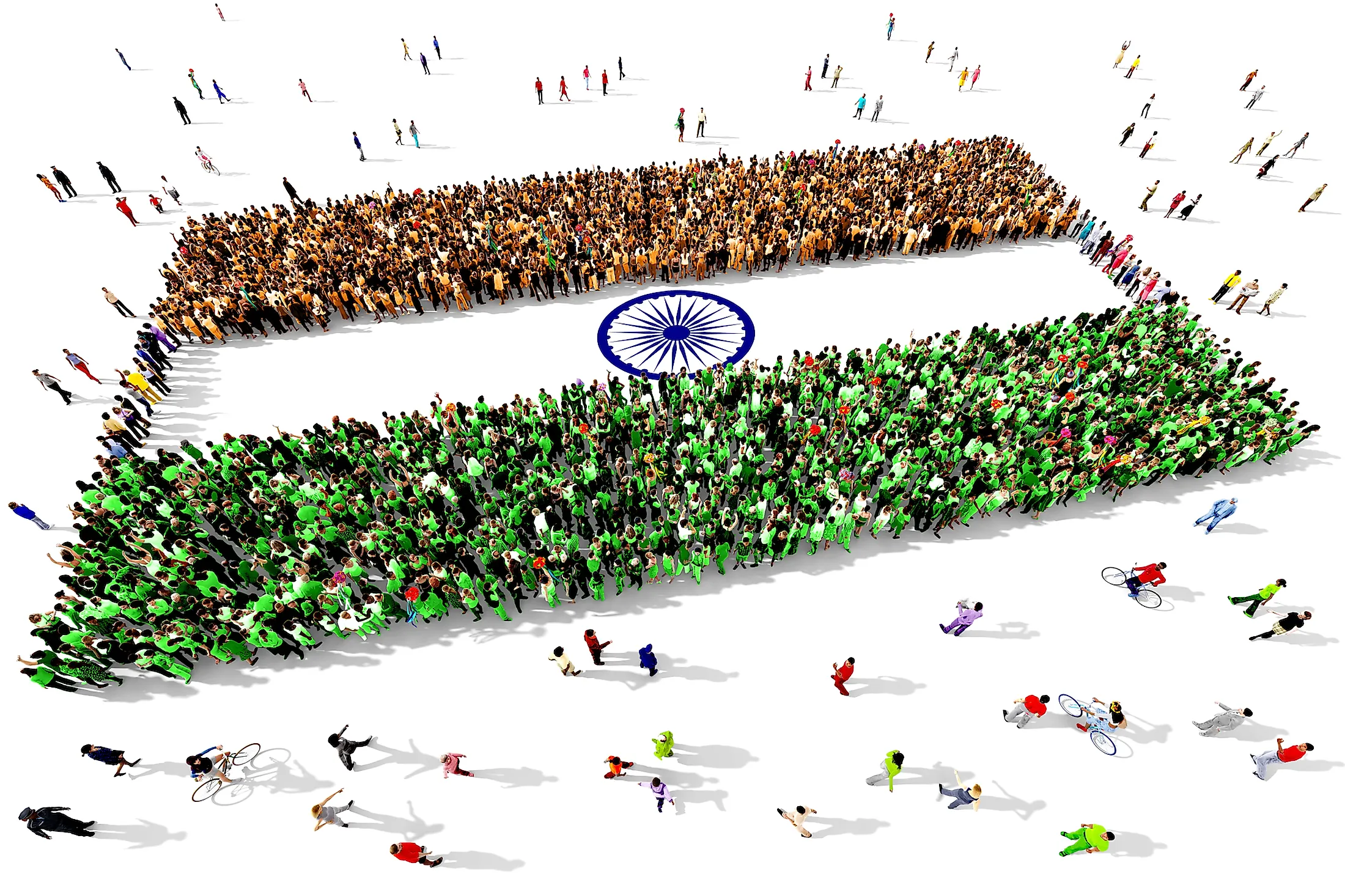
The Population Of India
India, a South Asian country, is the world’s 7th largest country by area and Asia’s second-largest country, after China. With about 1.35 billion people, India is the world’s second most populated country (after China) and the most populous democracy. It accounts for about 17.7% of the world’s population and 29% of Asia’s population. India’s population is four times the US population despite the North American country being three times larger. Uttar Pradesh is India’s most populous state with about 200 million people, followed by Maharashtra (112 million) and Bihar (104 million). The country has a population density of 411 people per square kilometer, making it the world’s 19th most crowded country.
Demographic Outlook
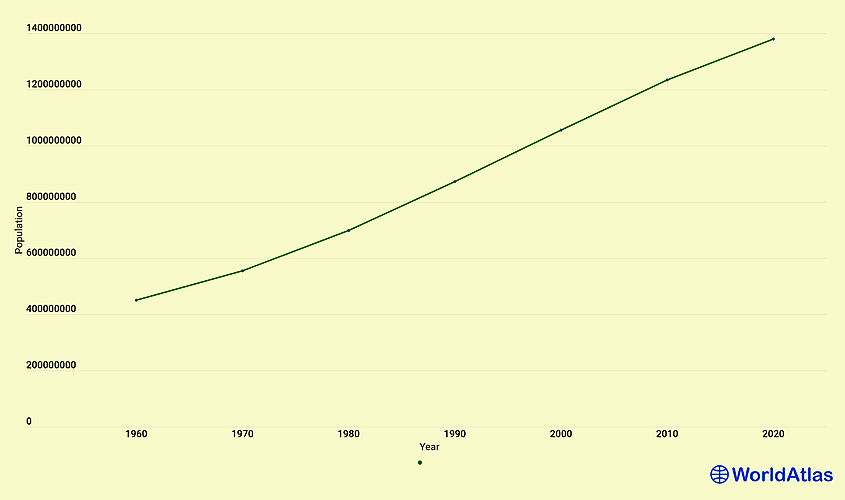
According to the World Population Prospect (2019), India has an estimated population of 1,352,642,280, making it the world’s second most populated country after China. However, it is expected to surpass China as the world’s most populous country by 2024. India has a young population, with about 65% of the people aged below 35 years. Additionally, half of the population are at most 25 years old, with Indians having an average age of 29 years.
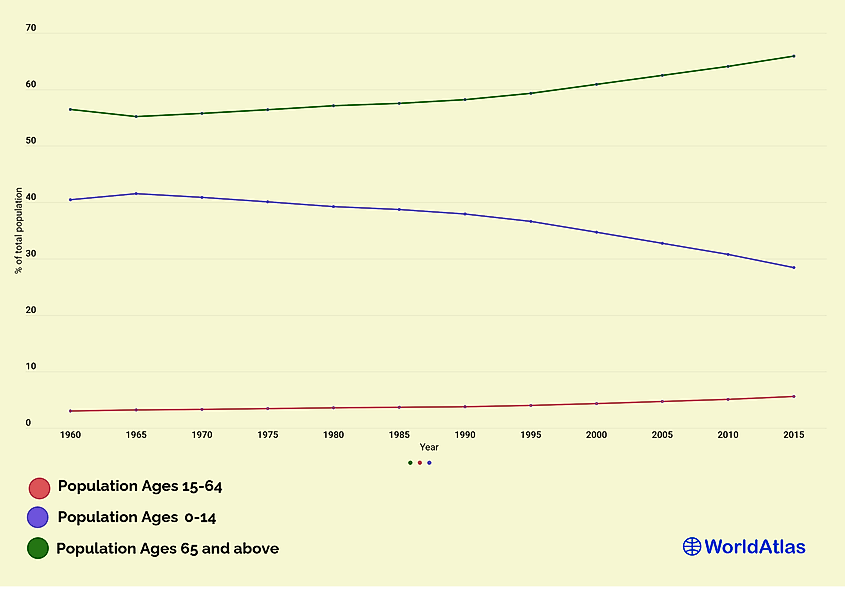
India's life expectancy is 70.03 years, with the females having a higher life expectancy (71.49 years) than the males (68.71 years). However, the human sex ratio stands at 948 females for every 1,000 males, meaning the country has more men than women. India has a population growth rate of 1.1%, the world’s 112th highest. From the Demographic Health Survey, the country’s fertility rate is 2.17 children per woman. The infant mortality rate stands at 29.9 deaths per 1,000 live births. According to the 2020 estimates, India has a birth rate of 18.2 births per 1,000 population and a death rate of 7.3 deaths per 1,000.
Population Growth Trends
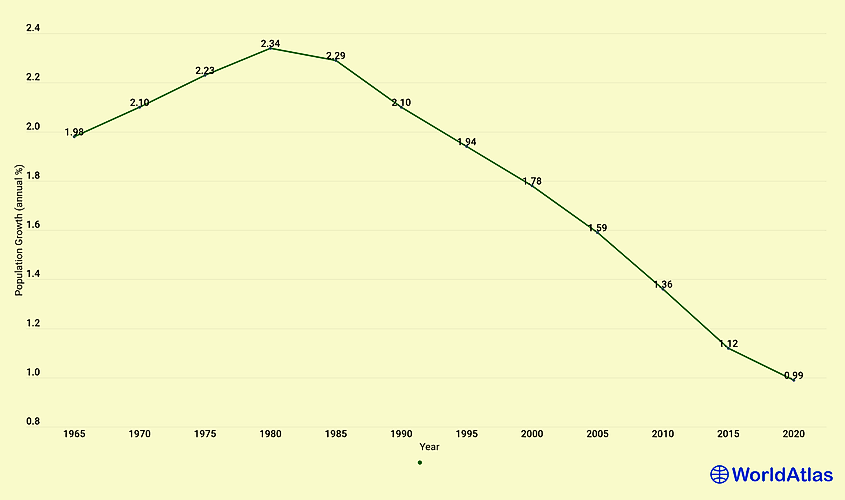
In the past, India’s population grew rapidly, imposing a substantial burden on the economy. However, the recent demographic trends seem to be more favorable to the country’s economic growth. Modern humans began inhabiting the Indian sub-continent about 55,000 years ago, spreading throughout the region. At the end of the classical era (500 AD), India had approximately 75 million people. During the Early medieval (500-1000 AD), the population remained largely stagnant, with the growth rate picking up in the late medieval era up to 1500. According to Angus Maddison, India had more than 100 million people by the end of 1500.
During the Mughal era (16-18th century), India’s experienced an average growth of about 32%. The unprecedented population growth is credited to intensified agriculture and agrarian reforms during the Mughal Empire. By the end of this period, the country’s population was between 170 million and 180 million. About half of this population lived in urban centers, with several cities hosting 250,000 to 500,000 people. However, during the colonial era, the average population growth rate dropped to about 12%. By the end of the 19th century, India was home to about 287 million people.
In 1901, India’s first census year in the 20th century, the country’s population was about 293.5 million. Thereafter the population rose steadily, reaching 500 million in 1966. Between 1974 and 2010, India’s population more than doubled, surpassing the one billion mark in 1998. The last national census, conducted in 2011, indicated the country’s population stood at 1.2 billion.
Declining Fertility Rate
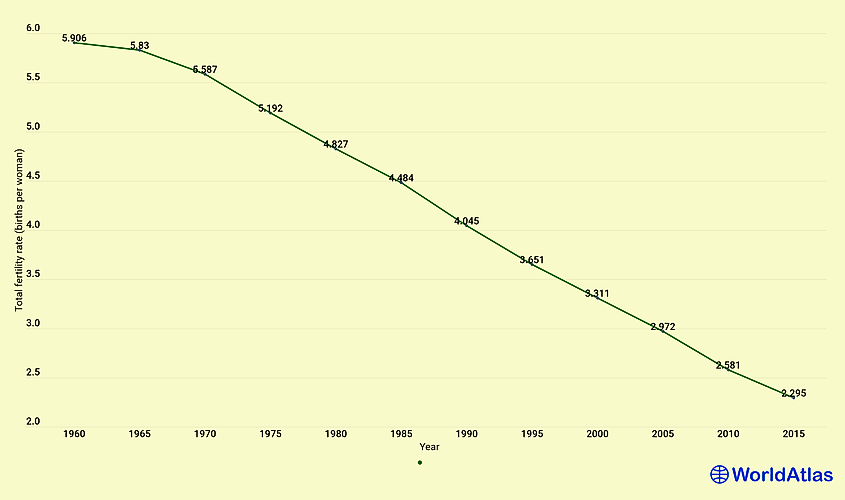
India’s high population growth rate in the past years was attributed to the high fertility rate across the country. However, the fertility rate has been on a steady decline in the last six decades. According to the World Bank, the country registered 5.9 births per woman in 1960, which dropped to 5.6 births in 1970. Between 1970 and 2000, the fertility rate declined to 3.3 births per woman. By 2017, the fertility rate was only 2.17 births per woman. India recorded a crude birth rate of 40.8 per 1,000 in 1971, which declined to 20.0 per 1,000 in 2018. Fertility rates in rural and urban areas have more than halved, falling below 2.1 (replacement rate) in urban areas.
India has recorded consecutive drops in the number of birth in the last four years, with the numbers expected to drop to below 10 million in the next few years. For instance, in 2020, the country recorded 12 million new births compared to 14.6 million in 2019. If no intervention policy is introduced, the country may have the world’s lowest fertility rate in the future. However, if India maintains the current fertility rate, its population will surpass China’s by 2024. It is also expected to be the first sovereign state to host 1.5 billion people.
Several factors contribute to the declining fertility rate in India, including increased access to essential services, overall prosperity, late marriages, increased mobility, and other related lifestyle choices. For example, more girls are completing schooling, especially in urban areas, meaning they either get married late or choose to have fewer children.
Projected Population Growth
India’s population is expected to continue growing, although at a much slower rate. The falling fertility rate is expected to sustain a positive demographic growth at least until the mid-century. The population is projected to increase by 25% between 2011 and 2036 to reach 1.56 billion. According to the UN, India’s population is projected to be 1.64 billion by 2050, while IHME projects the population to cross the 1.6 billion mark by 2048. According to the Ministry of Health and Family Welfare report, the decadal growth rate is expected to decline to 8.4% in the 2021-2031 period, down from 12.5% in the 2011-2021 period
Although India’s population is expected to be 1.56 billion by 2036, urban areas will account for 70% of the increase. Thus, the population in urban areas will increase from 377 (2011) to 594 (2036), representing a 57.6% growth. This means that the proportion of Indians living in urban areas will increase from 31% in 2011 to 39% in 2036. New Delhi will become 100% urban (it is currently 98% urban). Northern India will witness a sharp rise in population than the south. Uttar Pradesh’s population is expected to increase by 30% to 258 million in 2036. UP, alongside West Bengal, Bihar, Madhya Pradesh, and Maharashtra will account for 54% of the increase.
The UN projects the world population to surpass 10.9 billion by the end of the century. Despite the high numbers, India is expected to have fewer people than it does now. The country’s population will begin to decline after 2050 and is predicted to drop by 600 million to about 1.09 billion by 2100. However, it will still be the world’s most populous country (China coming third after Nigeria). Its population density will drop to 332 people per square kilometers from the current 411 people.











